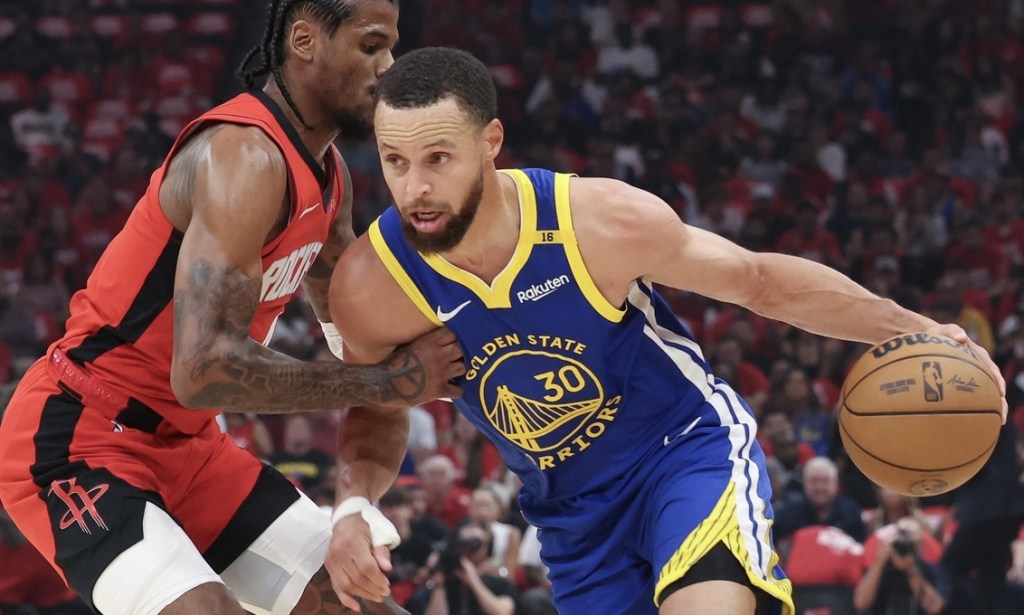Cryptocurrency is in a completely different place than it was when Los Angeles’ famous Staples Center became Crypto.com Arena close to a year ago.
Since then, the crypto market crashed and the subsequent $2 trillion in value wiped out has exacerbated skepticism over the sustainability of the largest naming rights deal in sports history. “Could Crypto.com Arena Go The Way of Enron Field?” asked one publication.
The question has merit.
Bitcoin — which peaked at $68,000 in November 2021 — quickly dropped 70% to around $20,000 by summer 2022. Before the severe downturn, it seemed like athletes, leagues, and teams were announcing major crypto partnerships every other week.
Crypto.com Arena, home of the Los Angeles Lakers, Clippers, Kings, and Sparks, got its new name in a blockbuster 20-year, $700 million deal. Coinbase dropped a reported $192 million to join forces with the NBA. FTX got in bed with MLB.
All in all, crypto businesses committed $2.4 billion to sports marketing in the span of 18 months.
Then the cracks started to show. Cue flashbacks to the dot-com bubble.
Voyager, which had deals with the Dallas Mavericks and NWSL, filed for bankruptcy. FC Barcelona and Manchester City canceled deals with crypto startups accused of fraud. FTX scuttled a jersey patch deal with the Los Angeles Angels. Coinbase announced layoffs.
I sat courtside with Crypto.com’s chief marketing officer Steven Kalifowitz at the Lakers’ opening home game of the 2022-23 season. We watched LeBron James feet away from us and talked about the recent shift in dynamics within the crypto industry.
He seemed tired of the narrative that the arena deal is in jeopardy.
“This is a 20-year deal. I can’t speak about what Voyager did or didn’t do or whatever their issues are, but we have a strong business, we’re going to be here a long time, and we need to act like it,” said Kalifowitz. “We’re extremely conservative. People saw the pace of the deals we did and were like, ‘What the f—?’ But we just outworked everybody. Every deal we did, if you look at the numbers, they’re extremely high value for money, extremely.
“We didn’t just cut a $700 million check to [venue owner AEG] last year. Go ask how much Coinbase paid for the NBA deal. More than double what I spend a year here. And do you think they’re getting double the value? I think they’re getting a quarter of the value, if that much.”
Despite the bear market, Crypto.com has now passed the 70 million user mark, up from 50 million users in May. The platform only had 10 million users in February 2021.
“Our sports marketing partnerships have been central to putting Crypto.com on the map and helping drive our exponential growth over the past two years,” Kalifowitz said. “These efforts will continue to be a focal point of our marketing strategy moving forward.”
Crypto.com’s eye-catching deals in sports were especially pronounced during the upswing in the market and cast into even more of a spotlight when it fell, chief among them:
- A deal that made them the crypto trading platform of FIFA World Cup Qatar 2022.
- A 10-year, $175 million partnership with UFC.
- Another for five years and $100 million with Formula 1.
- Individual deals with a long list of teams, leagues, and athletes like LeBron James.
And, of course, the aforementioned decades-long deal for Crypto.com Arena.
“Look, we’ve been through these cycles as crypto people. The people who run this company are seasoned people. We’re not 20-year-old kids who are starting our first company. And so, in the context of these deals, we only did deals we knew we could handle.” Kalifowitz said. “We weren’t spending out of control by any means. We had a budget.”
If it seems like the CMO is playing defense, it’s because in many ways he is.
This year, Crypto.com announced its own layoffs and reportedly stepped back from a five-year, $495 million agreement with the UEFA Champions League. (The company denies backing out of the deal, preferring to say that it was advised against proceeding following due diligence and cites a continued “good relationship with UEFA.”)
The company’s by-now infamous “Fortune Favors The Brave” commercial, which starred Matt Damon, has been taken down from Crypto.com’s YouTube channel. The ad has been lambasted as a spectacular failure, worsened by the market’s implosion, and given the gusto with which it was premiered, one of the reasons why cryptocurrency has fallen out of favor with much of the public.
AdAge referred to the company’s marketing woes as a “meltdown.” A critical article from The Intercept pointed out that had you been brave enough to invest $1,000 in Bitcoin when the Matt Damon ad premiered on October 28, 2021, you’d have $342 in Bitcoin a year later.
The Lebron James version of the ad is still up.
“We haven’t canceled the ads. Ads have a shelf life. You can’t keep running them,” said Kalifowitz. “So the Matt Damon ad ran and then it sunset. You run an ad for a quarter. You run it longer than that and it either gets stale, people get bored with it, or they stop paying attention.”
Kalifowitz weighs the backlash against the awareness that the campaign, and other bold moves like Crypto.com Arena, created for the company. “We were a little-known crypto app that crypto people knew about, right? But the average person never heard of it. Today, we’re a household name,” he said. “Not among crypto people. But among everybody.”
With more users now than before crypto collapsed, perhaps he’s right that the flashy marketing paid off in some capacity, even if “South Park” made fun of them for it.
“We will do over a billion dollars in revenue this year for the second consecutive year,” Kalifowitz said. “We saw 20-times revenue growth last year, and despite the current bear market, we continued to grow our user base on both the retail app and our exchange.”
The 70 million user count represents both Crypto.com’s retail app and its exchange business.
- The retail model — where the platform owns the crypto and sells it to the customers — often draws lower investment amounts, but from more people (e.g. Coinbase).
- Exchanges, like FTX, tend to have less users but more whales.
The bulk of Crypto.com’s revenue comes from its retail business but it launched its U.S. exchange back in March. The company is cash flow positive as of September 30, according to a person familiar with the company’s financials. CEO Kris Marszalek last said the company was profitable, albeit without specific numbers, in November 2021.
“We’re still in the process of creating this brand. Did we come on strong? Did we go out hard with a lot of assets? Yeah, because I wanted to reach the world quickly, and it was a good market that was receptive,” Kalifowitz said. “Someone said to me, ‘Oh, I don’t look at my crypto portfolio.’ I said, ‘I don’t look at my 401k, either.’ All markets are wrecked right now.”
A few things keep Kalifowitz optimistic.
- For starters, it’s remembering that some of today’s most successful companies were born in the ashes of the dot-com bubble and kept building when everyone doubted the potential of the internet.
- Another point is his assertion that “Crypto.com has more country licenses, registrations and security certifications than any player in the crypto space,” which gives them more opportunities to conduct business around the world.
- He’s also pleased that, bear market or not, cryptocurrency is no longer a fringe idea, but an acceptable part of one’s portfolio.
“Crypto is a risk asset and when things are uncertain, the first thing you do is pull away from risk,” he said. “But as soon as things become clearer, you go towards risk because risk has the highest upside.”
All we can do at this point is wait and see if he’s right.



















